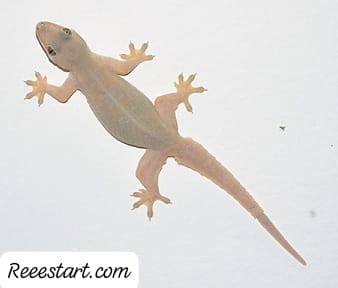Natural Effective Ways to Control Geckos at Home
Geckos are among the most unsettling and unwelcome pests in homes, leading to many questions about how to combat them. This is largely due to the lack of globally recognized pesticides designed specifically for geckos. In the European Union, regulations prohibit the killing of geckos, thus protecting them. Most products available in Arab countries are merely attempts to repel these creatures.
Harmful Effects of Geckos
Geckos are generally harmless to humans. The common house gecko is non-venomous and is sometimes kept as a pet, as they feed on insects and help control pest populations. However, their appearance can be unsettling, and they may carry pathogens and microbes, which is why they are often targeted for removal.
Gecko Behavior and Characteristics
Geckos, also known as house lizards, come in various names such as “wazagh” and “baras.” They are small reptiles from the squamate family, commonly found in warm regions. Geckos have thin, spotted skin, and their colors range from red, green, to brown. Some species can change color for camouflage, similar to chameleons. They can grow from 1.6 to 60 cm in length.
Geckos are nocturnal and communicate through sounds. They do not have eyelids; instead, a thin membrane covers their eyes, which they clean with their tongues. Many species can detach their tails when threatened, allowing them to escape while the tail distracts predators.
Signs of Gecko Presence in the Home
The most noticeable sign of geckos is their droppings, which are dark brown with a white tip. Additionally, spotting a gecko crawling on your walls is a clear indicator.
Best Natural Methods to Control Geckos
While geckos can help eliminate insects, you may want to keep them outside your home. Here are effective natural methods to repel and control geckos:
1. Eggshells: Placing unground eggshell halves around your home makes geckos think they are in the presence of predators, causing them to flee. Replace them every 3 to 4 weeks.
2. Sticky Traps: Using sticky traps for flies and other insects can help catch geckos as well. Place these traps along gecko pathways, under the refrigerator, and behind furniture.
3. Coffee and Tobacco Balls: Create small balls of wet coffee and tobacco, place them near nesting areas, and geckos will eat them and die.
4. Garlic Cloves: The strong smell of garlic is a natural repellent for geckos. Place garlic cloves around entrances.
5. Onion Slices: Cut an onion in half and place it in areas where geckos frequent. The smell will drive them away.
6. Pepper Spray: Mix pepper and water in a spray bottle and spray around your home, particularly in corners and near entry points.
7. Manual Capture: If a gecko is persistent, consider capturing it manually. Use a box to encourage it to enter, and then close the lid and dispose of it.
8. Preventive Measures: Make your home an unsuitable environment for geckos by keeping it clean and fixing any water leaks that attract them.
Preventing Gecko Entry
To prevent geckos from entering your home:
Maintain general cleanliness, keeping floors swept and avoiding clutter.
Ensure furniture is placed at least six inches from walls, and avoid excessive decorations that provide hiding spots.
Repair leaks and eliminate stagnant water sources.
Create an uninviting backyard by removing water sources and hiding spots.
Targeting Gecko Food Sources
Geckos feed primarily on insects. To reduce their presence, control insect populations, including mosquitoes, flies, ants, and cockroaches.
Conclusion
Geckos can be easily managed using natural ingredients and safe sticky traps. By implementing these methods, such as using eggshells, coffee-tobacco balls, garlic, onion, and regular cleaning practices, you can effectively control gecko populations without resorting to harmful pesticides. For best results, combine these methods to create a comprehensive plan for managing geckos in your home.

